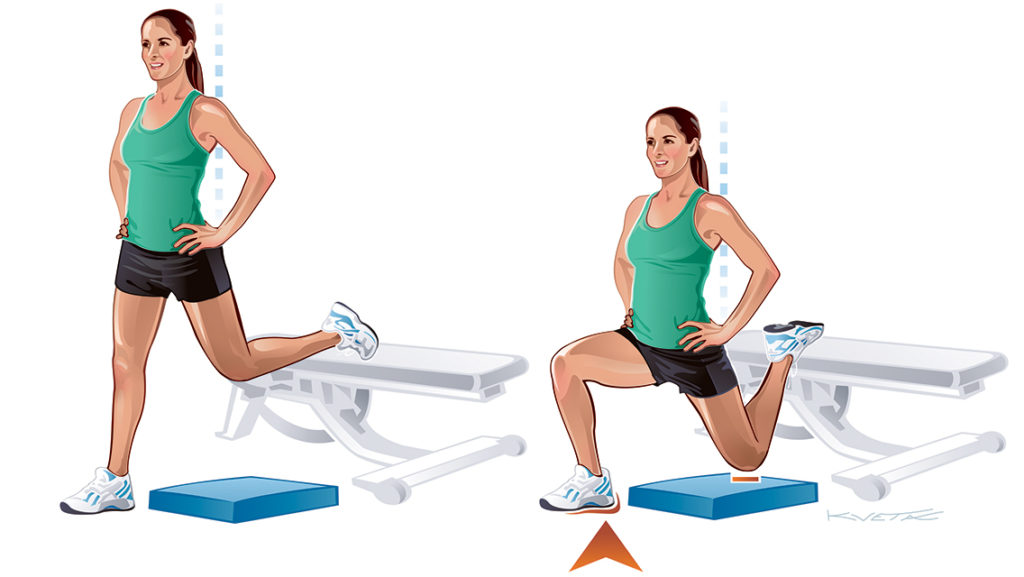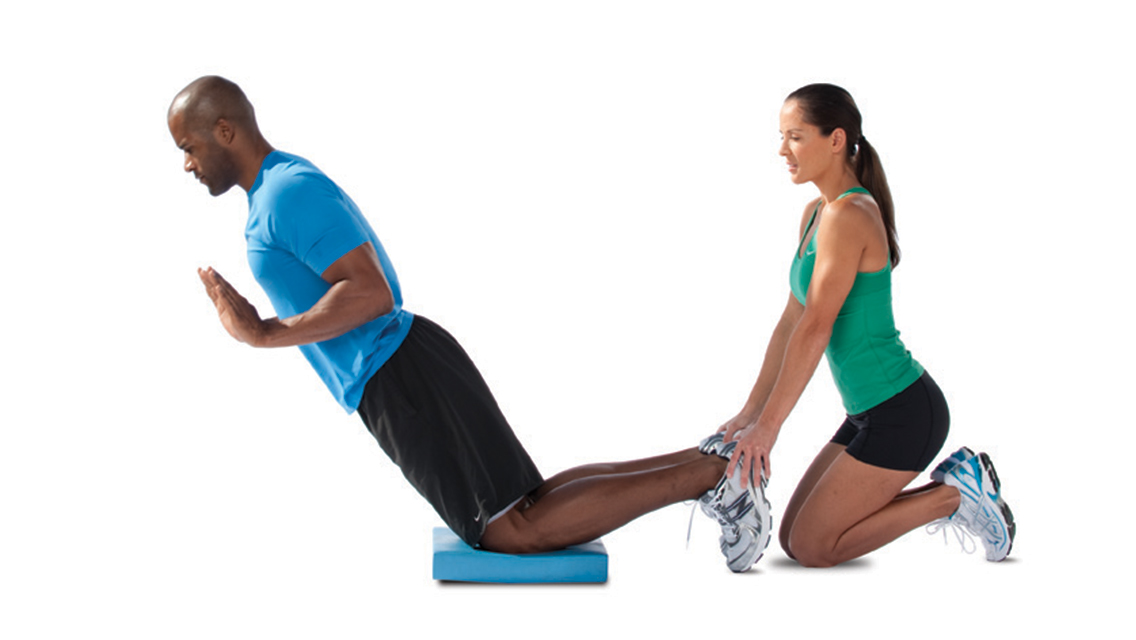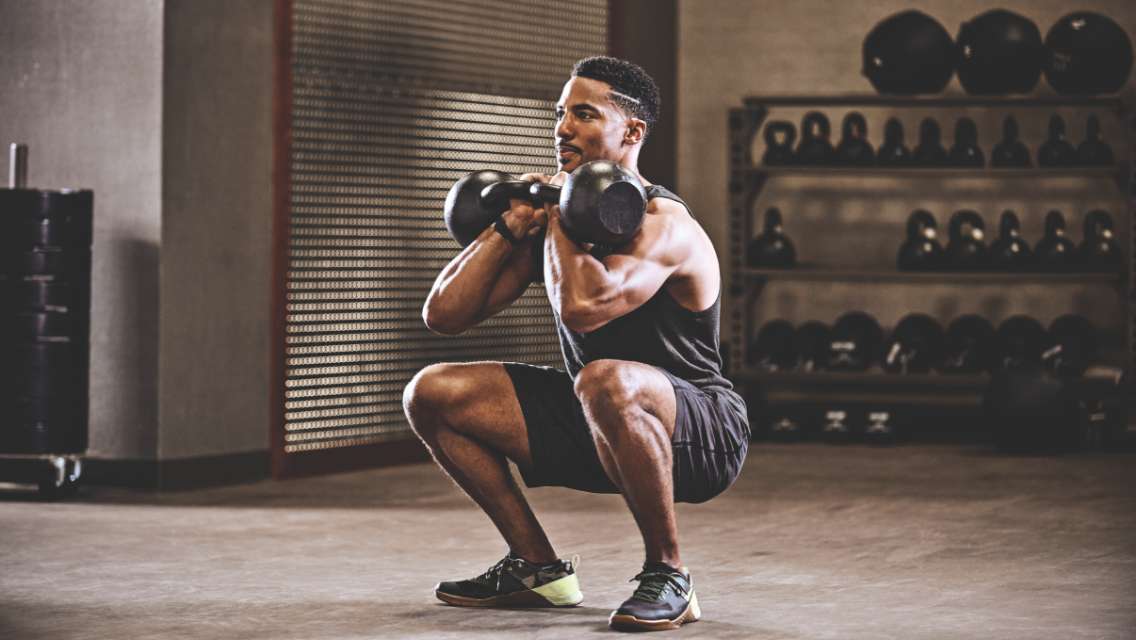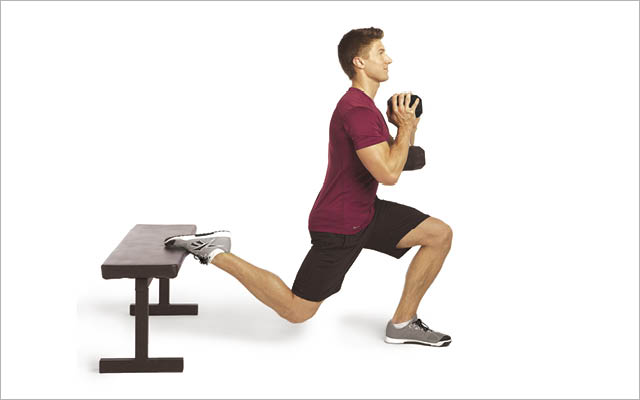Get a bunch of smart trainers started on their favorite workout secrets, and it can be hard to stop ’em.
Last spring, Experience Life went looking for the kind of underhyped, underused exercises that more of us should be doing more often — the kind that leave one feeling the hurts-so-good difference that can only mean new muscle.
We hit up a handful of nationally known, cutting-edge trainers for the moves they deemed most worth working into your routine. They responded with six terrific selections (which, if you haven’t incorporated them into your routine already, can be found in the May 2010 archives). And then they kept on responding.
So, here again to spice up your workout are six more often-overlooked but highly effective strength-training exercises, all well worth a place in your rotation.
As before, our experts have road-tested their choices on pro athletes and average gym-goers alike. You’ll see how to execute these movements, what they’re good for and which conventional exercise each one most closely replicates.
And there are options here for your lower body, your upper body and your core, so no matter what’s on the docket for today, you’ll be able to make one of these new classics your own.
Lower Body
Glute-Ham Raise
An exercise that manages to work the posterior chain in ways most exercises don’t. Because of this, the glute-ham raise helps correct muscle imbalances and improve power, stabilization and posture.
- Kneel on an exercise mat.
- Have a training partner hold your heels firmly.
- Keep your body as straight as possible from knees to head and slowly shift your weight forward, resisting gravity with your hamstrings and glutes.
- Lower yourself as slowly as possible, catching yourself as you get close to the mat (your finishing position will resemble the bottom of an on-the-knees pushup).
- Push off the mat just enough to get your body moving back to vertical. Simultaneously pull with your hamstrings and squeeze with your glutes until you return to the starting position.
- Keep your reps low at first — about five per set. Repeat for three to five sets.
Why It’s Worthwhile
The hamstrings do two things: flex (bend) the knee and help extend (straighten) the hip. Unlike the ever-popular leg curl machine, which requires movement only at the knee joint, the glute-ham raise trains both hamstring functions at once and activates the core as well. “I despise the machine leg curl because it’s a completely unfunctional exercise — it resembles nothing you do in life or in sports,” says strength coach Tony Gentilcore, NSCA-CPT, CSCS, cofounder of Cressey Performance in Hudson, Mass. “Glute-ham raises are humbling but worth the effort.”
Substitute for: Leg curls
Bulgarian Split-Squat
A single-leg lift that improves strength, balance, hip mobility and general athleticism. The Bulgarian split squat is fast becoming the go-to lower-body exercise for people with lower-back troubles, and some coaches even argue that it’s a better exercise than the much-revered barbell squat.

- Place an exercise mat (such as a 3-inch-thick Airex pad, pictured) on the floor in front of a knee-high bench or aerobic step.
- Stand 2 to 3 feet in front of the bench, extend your right leg behind you and rest your toes on the bench. Position your knee above the pad.
- Square your hips and shoulders.
- Without letting your right foot roll to either side, keep your torso upright and slowly drop your right knee toward the floor.
- When your knee lightly touches the pad, or when your hips or your back foot start to rotate out of alignment, push down through the heel of your left foot and return to the starting position.
- Do eight to 15 repetitions per leg. Repeat. Once you’re comfortable doing multiple sets of 15 on each leg, increase the difficulty by adding resistance: A weighted vest, dumbbells or a barbell are all great options.
Why It’s Worthwhile
The split stance makes it easy to maintain optimal posture, and because most of the work is done with your front leg, you can use just over half the weight you would normally use in a barbell squat and still get a killer lower-body workout. Be prepared to suffer a bit for these great results, however: “Bulgarian split squats are super-hard — they never feel good, and no matter how hard you try, you’re never going to be able to use a weight that impresses anyone,” says Alwyn Cosgrove, CSCS, co-owner of Results Fitness in Santa Clarita, Calif. So proceed with courage and abandon your pride.
Substitute for: Squats, lunges
Upper Body
Compound Row
A high-return, feel-good exercise that recruits your lats more effectively than seated rows.

- Set the pulley on a cable column machine to waist height and affix a V-handle (the two-handled attachment usually used for seated rows) to the cable.
- Select a medium-heavy weight, grip the handles and step back 4 to 5 feet from the machine to create tension.
- Take a shoulder-width stance with your knees slightly bent, then lean forward at the hips, keeping the natural arch in your lower back and allowing your arms to extend toward the machine. Your upper body should be roughly parallel with the floor.
- From this start position, stand upright, maintaining the natural arch in your lower back, and simultaneously pull the V-handle in toward your abdomen.
- To lower the weight, first extend your arms fully, then bend forward until your torso and arms are again parallel to the floor.
- Repeat for two or three sets of eight to 12 repetitions.
Why It’s Worthwhile
In sport and life, movement in the upper body is almost always initiated in the lower body, so you can often make a seated exercise more applicable to real-life situations simply by performing it standing up. But that’s not the only reason the compound row is an improvement on its old-school cousin, the seated cable row. Traditional rowing exercises minimize action at the spine and hip joints. But the lats — the heavy lifters in rowing exercises — don’t just move the arms. They also aid in pulling your spine from a flexed (rounded) position into an extended (arched) position. Standing upright from a bent-over position as you pull the weight toward you allows you to work both lat functions at once, explains Nick Tumminello, CPT, a Baltimore-area strength and fitness coach (www.nicktumminello.com). “It’s a more complete exercise, and most people think it feels great, too.”
Substitute for: Seated cable row, dumbbell row
Band-Assisted Chin Ups
A step in the progression toward being able to do unassisted body-weight chin-ups.

- Pass an elastic exercise band (the kind that forms a loop rather than the one with handles on the ends) over the top of a chin-up bar.
- Pull the back part of the loop through the front loop and tighten it around the bar so that a single loop hangs down in front of you.
- Stretch the band down and pass one knee through the loop so that your shin is braced firmly against the elastic (you may want to wear long pants to prevent chafing).
- Grab the chin-up bar with a shoulder-width, underhand grip, and lift your free leg a few inches off the floor.
- Pull your shoulder blades down and toward the center of your back, and keep them there throughout the movement.
- From this starting position, pull yourself up until your chin clears the bar.
- Lower yourself under control, keeping your shoulder blades retracted, and repeat for three to five sets of at least five reps. The thicker the band, the more of a boost it will provide.
Why It’s Worthwhile
Gentilcore prefers this variation to the one performed on the assisted chin-up machine, which provides constant assistance throughout the entire movement. The lower-tech elastic-band version provides what he calls accommodating resistance: “It helps you more where you’re weakest — at the bottom of the exercise — and less where you’re strongest — at the top,” he explains. “You’ll get stronger faster using the band, and pretty soon won’t be needing assistance at all.” (For more on how to work up to doing an unassisted pull-up, see “Clear the Bar” in the May 2008 archives.)
Substitute for: Machine-assisted pull-ups
Core
Alternating Toe Touchdown
An advanced plank variation, this exercise ups the level of difficulty and recruitment of core musculature by placing the feet on a Swiss ball — and then moving them off, one at a time.
- Get into a pushup position with both feet elevated on a medium-size Swiss ball. Make sure your body forms a straight line: your head and neck in line with your spine, and your shoulders over your hands.
- Keeping your legs straight and your upper body as motionless as possible, lift your left leg a few inches off the Swiss ball.
- Extend your left leg to the left of the ball and lower it slowly, tapping the floor with your toes at the bottom of the movement.
- Slowly lift your left leg back up to rest on top of the ball.
- Repeat the movement with your right leg and alternate sides for a total of up to 15 reps on each side.
- Perform two to three sets.
Why It’s Worthwhile
Some strength-training exercises require careful attention to form to do them safely and effectively. The alternating toe touchdown isn’t one of them, however, and that’s part of what makes it a great exercise: “This is a self-limiting movement,” says Cosgrove.
“It provides instant feedback to the exerciser about form and correct muscle recruitment.” Unless you fire up your core appropriately, he explains, your hips will sag and your feet may even slip off the ball. “You have to stabilize like crazy through your core, making subtle adjustments as your legs move and your arms and shoulders stabilize you. It’s a very tough, advanced exercise.”
Substitute for: Plank with leg lifts
Renegade Row
“The renegade row is essentially an advanced plank,” says Sara Wiley, MS, CSCS, associate director of strength and conditioning for athletics at the University of Minnesota.
- Select a pair of medium-weighted dumbbells — the hexagonal kind is ideal if you’re trying this move for the first time because they don’t roll around — and get into pushup position: feet shoulder-width apart, hands directly beneath your shoulders, gripping the dumbbell handles for support.
- Minimizing any rolling or tilting in the hips, shift the entire weight of your upper body onto your right hand and pull the dumbbell in your left hand toward your left hip as if performing a single-arm dumbbell row.
- Lower the dumbbell to the starting position, shift your weight onto your left hand and repeat on the right side.
- Alternate sides for two to three sets of 10 to 15 repetitions on each side.
Why It’s Worthwhile
Basic planks — done isometrically (with no movement) — are excellent for static core and shoulder stability. In life and athletics, however, the torso muscles have to stabilize the spine while your limbs are in motion — for example, making adjustments as the baby squirms in your arms or lunging to return a serve on the tennis court. By adding the rowing motion to the basic plank, renegade rows replicate this kind of challenge, forcing the core to stabilize the spine dynamically while your center of gravity is shifting.
Substitute for: Plank with hands on stability ball





This Post Has 0 Comments